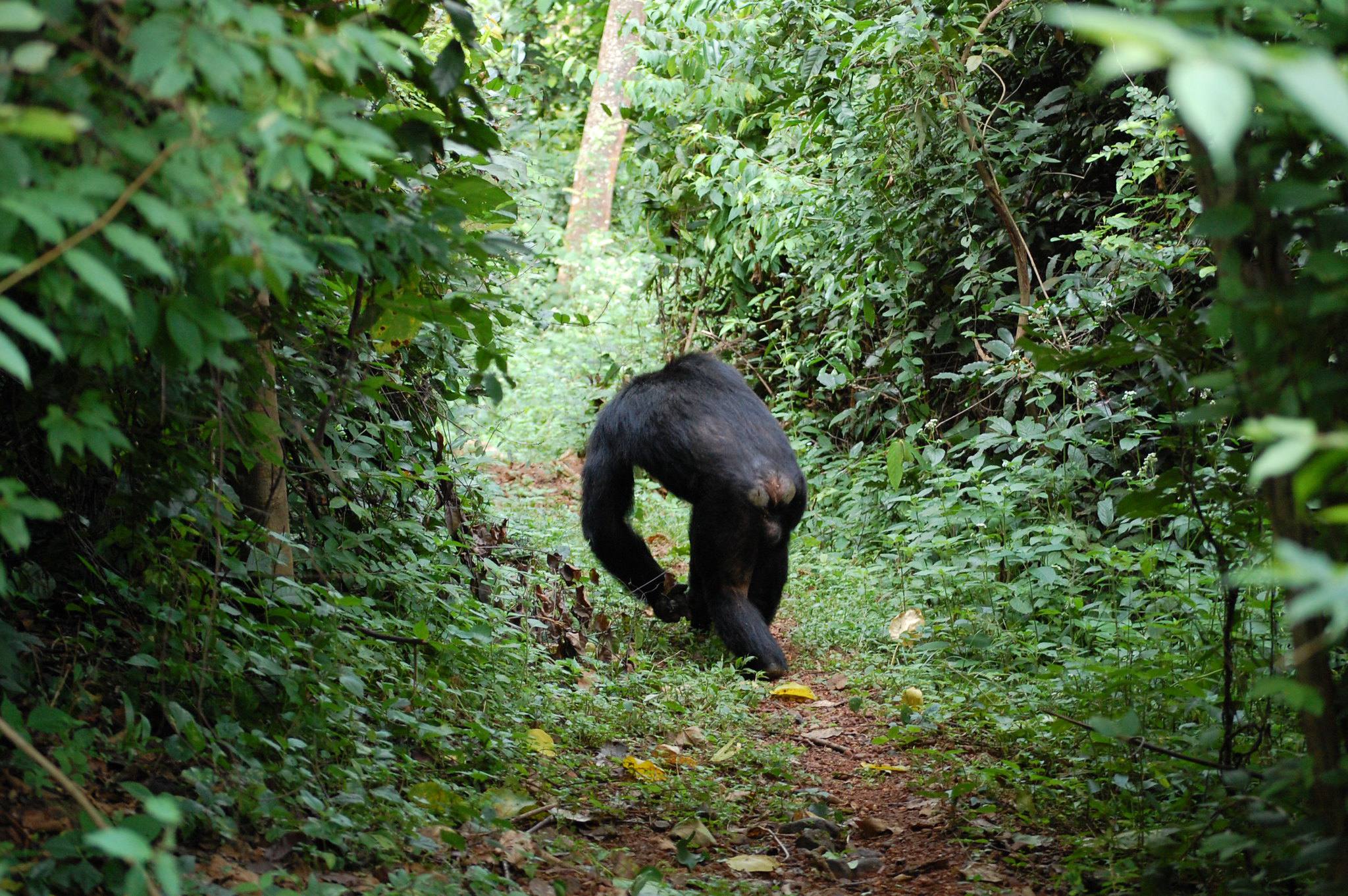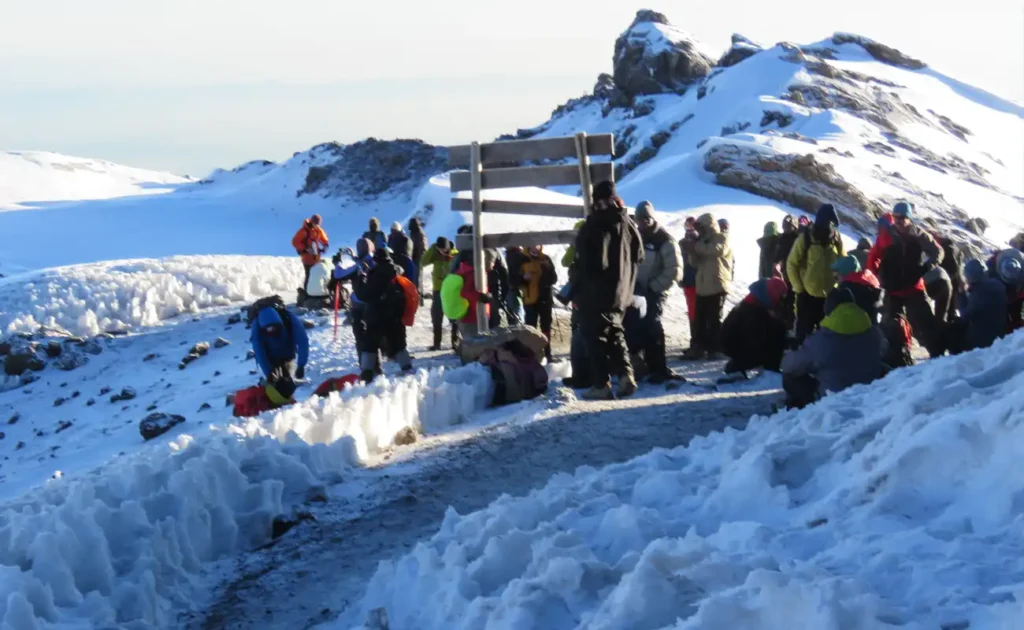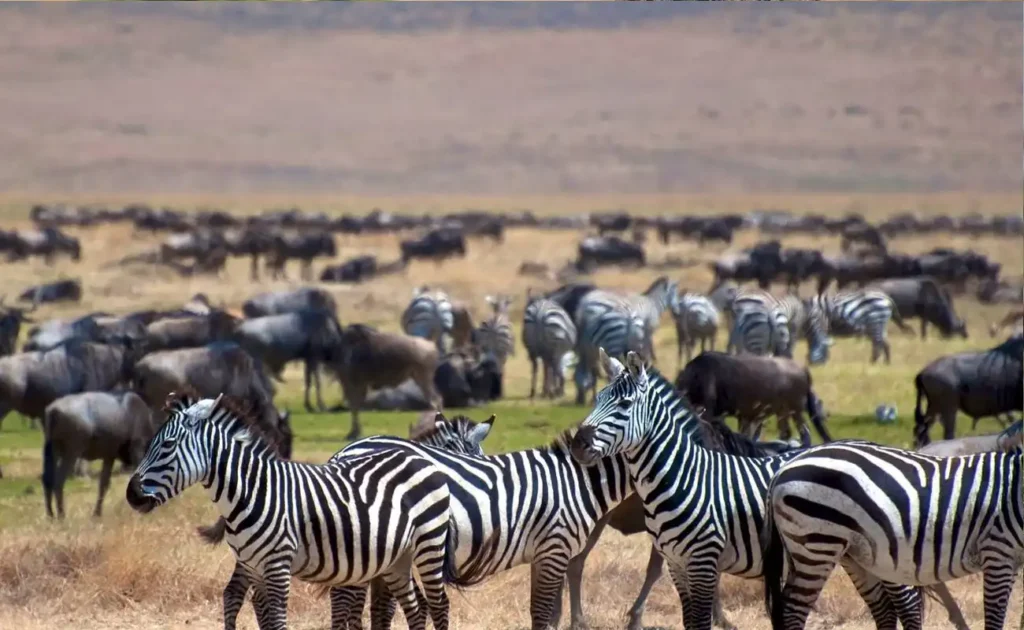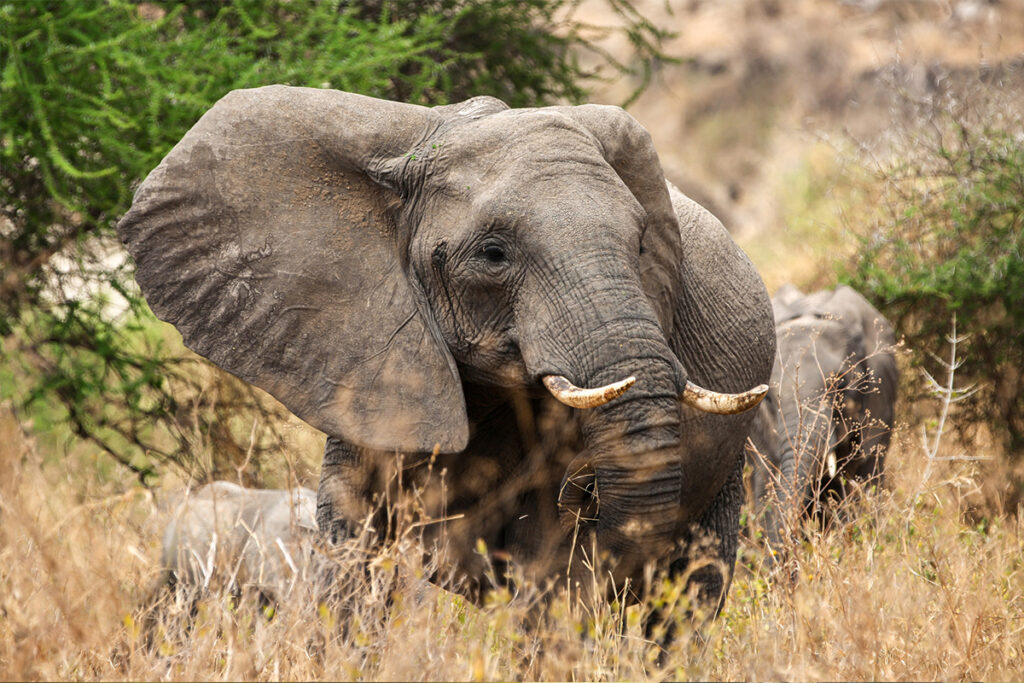Ever wondered where Dr. Jane Goodall made her groundbreaking discoveries about chimpanzees? It was at Gombe Stream National Park, a small gem in Tanzania that has become synonymous with primate research. Nestled along the shores of Lake Tanganyika, this haven is not just for primates but also a hotspot for researchers and conservationists.
Established in 1968, Gombe Stream National Park spans approximately 35 square kilometers. It provides shelter to hundreds of chimpanzees, and the park’s effort in conservation is monumental. With ongoing research and preservation initiatives, Gombe continues to be a pivotal site for understanding primate behavior and forest ecosystem resilience.

Gombe Stream National Park: A Snapshot
Gombe Stream National Park is a stunning mosaic of forests and streams. Located in western Tanzania, it hugs the shores of Lake Tanganyika. The park spans only about 35 square kilometers, making it one of the smallest in the country. Despite its size, it is home to an incredible diversity of wildlife. Tourists often marvel at the sight of chimps swinging between trees, adding a touch of charm to the natural landscape.
Beyond the captivating chimps, Gombe is a sanctuary for many other creatures. It’s not uncommon to spot olive baboons and red-tailed monkeys in the thick vegetation. Diverse birdlife also thrives, with fishermen eagles soaring high above. The park’s unique ecosystem allows a multitude of species to coexist. Such biodiversity makes it a dream destination for wildlife enthusiasts.
Getting to Gombe Stream National Park is an adventure in itself. Visitors usually take a boat from nearby Kigoma, which is an exciting experience. Once there, guided tours help visitors explore the park’s wonders at a relaxed pace. According to this post, it’s considered one of the top places for a wild adventure in Tanzania. This makes it not just a place to visit but a journey to savor.
The park’s story is rich with history. Jane Goodall’s remarkable chimpanzee studies began here in the 1960s. Her pioneering work continues to draw researchers from around the globe. The park remains a vital site for conservation efforts, focusing on preserving its unique ecosystems. Gombe Stream National Park is much more than a tourist attraction; it’s a cradle of scientific discovery.
Location and Size
Gombe Stream National Park rests along the stunning shores of Lake Tanganyika in Tanzania. This lake, the second deepest in the world, provides a breathtaking backdrop for the park. The park lies only 16 kilometers north of Kigoma, a bustling local town. It is quite remote, requiring a boat ride from Kigoma to reach this natural treasure. This isolation adds to its allure, making it feel like a hidden paradise.
The park itself covers an area of around 35 square kilometers. Despite its small size, the park is full of life. Within this compact space, dense forests, rivers, and valleys create a rich tapestry of terrains. Each area within the park offers a unique habitat for different types of wildlife. The intimate scale also means it’s easy to explore, offering visitors a chance to see much of it without long travel times.
While small, the park’s strategic location plays a vital role in conservation. It’s situated in a crucial ecological zone along the Albertine Rift. This positioning supports a wide variety of plant and animal life. The park’s location helps protect species by providing a corridor for migration and genetic diversity. Gombe Stream thus stands as a critical link in the ecological chain.
Its relatively compact size doesn’t mean limited exploration opportunities. Visitors have the chance to trek through its lush forests and along the lakeshore. Spotting wildlife, particularly chimpanzees, is a highlight not to be missed. These adventures offer an up-close experience with nature in a way that larger parks might not. Gombe Stream invites exploration, promising discoveries around every corner.
Flora and Fauna
Gombe Stream National Park is a botanical wonder, teeming with diverse plant life. Its thick forests are mostly tropical, filled with towering trees and lush undergrowth. These forests provide ample shade and resources for the animals living here. The different layers of vegetation create unique pockets where various creatures thrive. From ferns to tall canopy trees, every plant plays a part in this vibrant ecosystem.
The fauna of Gombe Stream is equally impressive. The park is most famous for its chimpanzees, which are often observed swinging playfully in the trees. But these primates are not the only residents. You can also spot red colobus monkeys, vervet monkeys, and bushpigs wandering through the park. Each species contributes a rhythm to the park’s lively harmony.
Birdwatching enthusiasts find Gombe Stream National Park a paradise. Its varied habitats attract numerous bird species, making it an ideal spot. Among the colorful residents are the African fish eagle and the pied kingfisher. Bird songs fill the air, adding a musical backdrop to every visit. The diversity of birds is truly remarkable and draws visitors worldwide.
The rich tapestry of flora and fauna is complemented by the park’s aquatic life. The shores of Lake Tanganyika border the park, offering views of hippos and crocodiles. Fish species in the lake add to the park’s biodiversity. This wide range of animals and plants makes every visit a chance to see something new. Gombe Stream’s thriving environment highlights the beauty of Tanzania’s wildlife.
The History of Gombe Stream National Park
Gombe Stream National Park has a rich history intertwined with groundbreaking research. In 1960, Jane Goodall arrived in Gombe to study the behavior of chimpanzees. Her observations changed how we understand these incredible creatures. At that time, little was known about chimpanzee communities. Her work brought global attention to Gombe and its inhabitants.
In 1968, the area officially became a national park. Its establishment aimed to protect the unique chimpanzee population and their habitat. The park’s creation was a significant step for conservation in Tanzania. This recognition helped ensure the survival of many species. It also made Gombe a critical site for ecological research.
Jane Goodall’s work in Gombe is still ongoing. Her research data span decades, offering invaluable insights into chimpanzee life. The park has since attracted a multitude of scientists from around the globe. Many come to continue her legacy and further study these fascinating primates. Gombe Stream has become synonymous with primate research.
Over time, the park has evolved to address new conservation challenges. With the help of local communities, efforts are focused on preserving the environment. Education initiatives aim to raise awareness about wildlife protection. These projects highlight the importance of sustainable practices. Community involvement is crucial in maintaining the park’s ecological balance.
The park’s history is not limited to academic research alone. It has also become a renowned tourist destination. Every year, visitors flock to experience its pristine beauty and witness the chimpanzees firsthand. Gombe offers an unparalleled glimpse into nature’s wonders. Its story continues to inspire generations.
The Role of Gombe Stream National Park in Chimpanzee Research
Gombe Stream National Park has played a pivotal role in chimpanzee research since the 1960s. Dr. Jane Goodall’s pioneering studies began here, offering insights that revolutionized our understanding of primates. Her research revealed complex behaviors such as tool use and social bonding. These findings were groundbreaking, challenging previous assumptions about primate intelligence. Gombe quickly became a hub for primate research.
The park is home to one of the longest-running studies on chimpanzees in the world. Over the decades, researchers have gathered extensive data on chimpanzee behavior, genetics, and social structures. This long-term research is crucial in understanding changes over generations. It helps scientists observe how environmental and social factors impact chimp populations. The depth of this data is unmatched globally.
Collaboration is a hallmark of research at Gombe Stream National Park. Scientists from various institutions partner to share findings and enhance studies. This collaborative environment fosters innovation in primate research. The park’s data contributes to broader ecological and conservation studies. These insights are vital for creating effective preservation strategies.
Technology has also advanced research in Gombe. Modern tools like GPS tracking and genetic analysis add precision to studies. Researchers can now follow individual chimps’ movements and social interactions with incredible detail. This technological integration enriches the existing body of knowledge. It allows scientists to uncover patterns previously unnoticed.
Gombe’s research has global implications for conservation. Understanding chimpanzee behavior aids in developing better protection plans for endangered species. The park’s work informs various conservation initiatives worldwide. By learning from Gombe, efforts to preserve primates and their habitats are more effective. The research conducted here serves as a model for primate conservation globally.
Visiting Gombe Stream National Park: What to Expect
Visiting Gombe Stream National Park offers an exciting adventure filled with nature and wildlife. As you take a boat ride from Kigoma, the anticipation builds with every wave. The park welcomes you with breathtaking views of Lake Tanganyika. It is a world where lush green forests meet sparkling waters. From the moment you arrive, you’re immersed in its extraordinary beauty.
One of the highlights is the chance to see chimpanzees in their natural habitat. Guided tours take you deep into the forest, where you may witness these fascinating primates up close. Observing their social interactions is an unforgettable experience. Besides chimps, the park teems with wildlife such as baboons and vervet monkeys. It’s a paradise for wildlife enthusiasts.
Hiking trails weave through the park, leading to stunning viewpoints. Each trail offers a different perspective of Gombe’s unique landscape. The fresh, crisp air and vibrant sounds of nature accompany every step. Along the way, you can spot diverse bird species and colorful butterflies. These trails provide a peaceful escape from the bustle of everyday life.
Visitors can also enjoy activities along the lake. Swimming and snorkeling in the clear waters of Lake Tanganyika is a refreshing treat. The lake’s biodiversity includes numerous fish species, enhancing the underwater exploration experience. Relaxing by the lake ensures that everyone can soak in the natural surroundings. It’s perfect for winding down after a day of exploration.
Planning a visit requires some preparation. As the park is in a remote location, arranging transportation in advance is essential. Accommodations are available nearby, ranging from simple lodges to more comfortable stays. Bringing proper gear, like hiking boots and sun protection, will ensure a pleasant trip. With some preparation, a journey to Gombe Stream National Park becomes a cherished memory.

Frequently Asked Questions
Below you will find answers to some of the most frequently asked questions about the fascinating Gombe Stream National Park. From research history to travel tips, we’ve got you covered.
1. What is the best time to visit Gombe Stream National Park?
The best time to visit Gombe Stream National Park is during the dry season, which runs from June to October. During this period, the trails are easier to navigate and the chimpanzees are more likely to be found near the park headquarters.
In the dry season, the weather is pleasant, and there’s minimal rain to disrupt your plans. However, the park can be visited year-round, each season offering unique experiences and different aspects of wildlife activity.
2. How can I reach Gombe Stream National Park?
Reaching Gombe Stream National Park usually involves multiple modes of travel. First, you can fly into the nearest major city, Kigoma, by taking a domestic flight from Dar es Salaam or other Tanzanian cities.
From Kigoma, visitors typically take a boat ride along Lake Tanganyika to access the park. This boat trip adds an adventurous element to the journey, offering scenic views and a hint of the wilderness awaiting you.
3. What wildlife species can be seen in Gombe Stream National Park?
Gombe Stream National Park is best known for its chimpanzee population. Additionally, visitors can encounter other primates like red colobus monkeys, olive baboons, and vervet monkeys within the park.
Birdwatchers will be delighted to find a range of exotic bird species. The park’s proximity to Lake Tanganyika also offers a chance to see aquatic life, including hippos and various fish species.
4. Are guided tours available in Gombe Stream National Park?
Yes, guided tours are available and highly recommended in Gombe Stream National Park. Expert guides lead these tours, offering valuable insights into the park’s history, wildlife, and ongoing research.
Guided tours are crucial in tracking and observing chimpanzees. They ensure a safe experience and maximize the chances of witnessing these fascinating creatures in their natural habitat.
5. What preparations are necessary before visiting Gombe Stream National Park?
Before visiting Gombe Stream National Park, it’s essential to prepare adequately. Ensure you have all necessary travel documents, including visas if required. Pack light but carry essentials such as sturdy hiking boots, sunscreen, and insect repellent.
It’s also advisable to book accommodations and guided tours in advance to avoid any last-minute hassles. Lastly, getting vaccinated and carrying some basic medical supplies can add to your safety and comfort during the trip.



